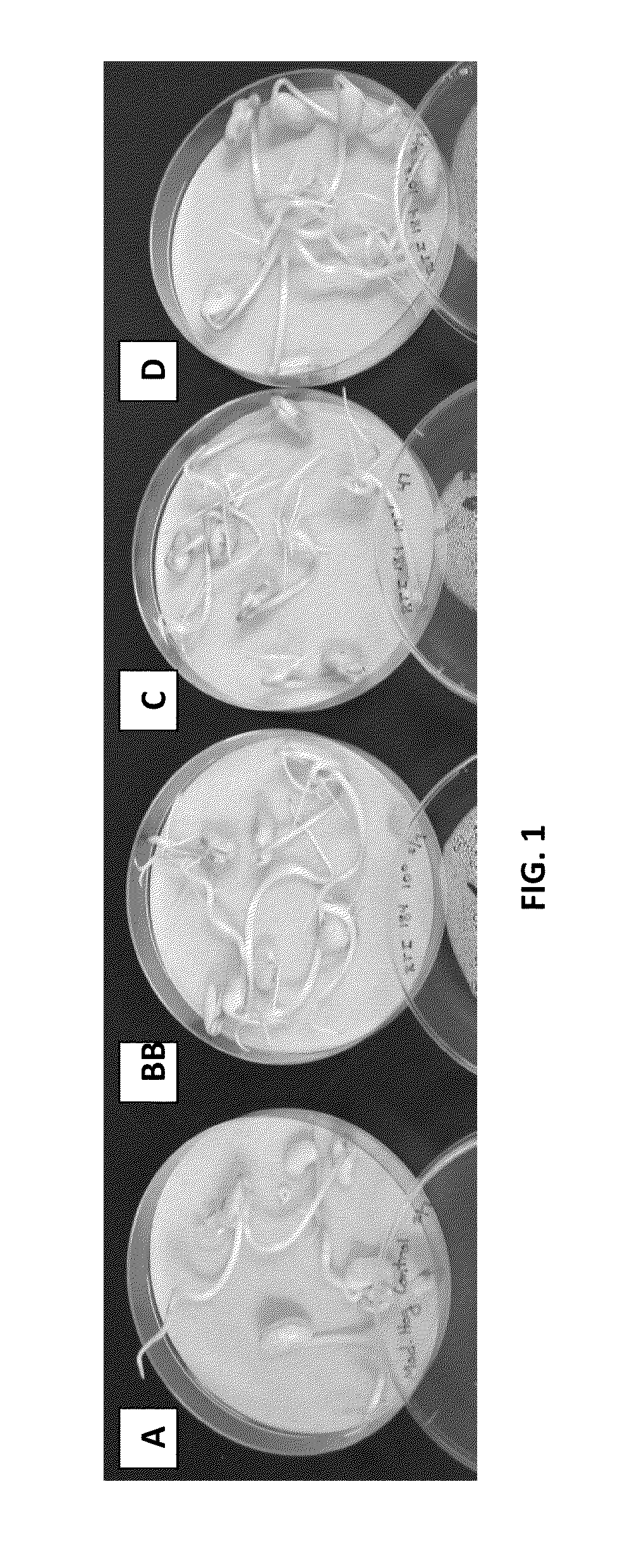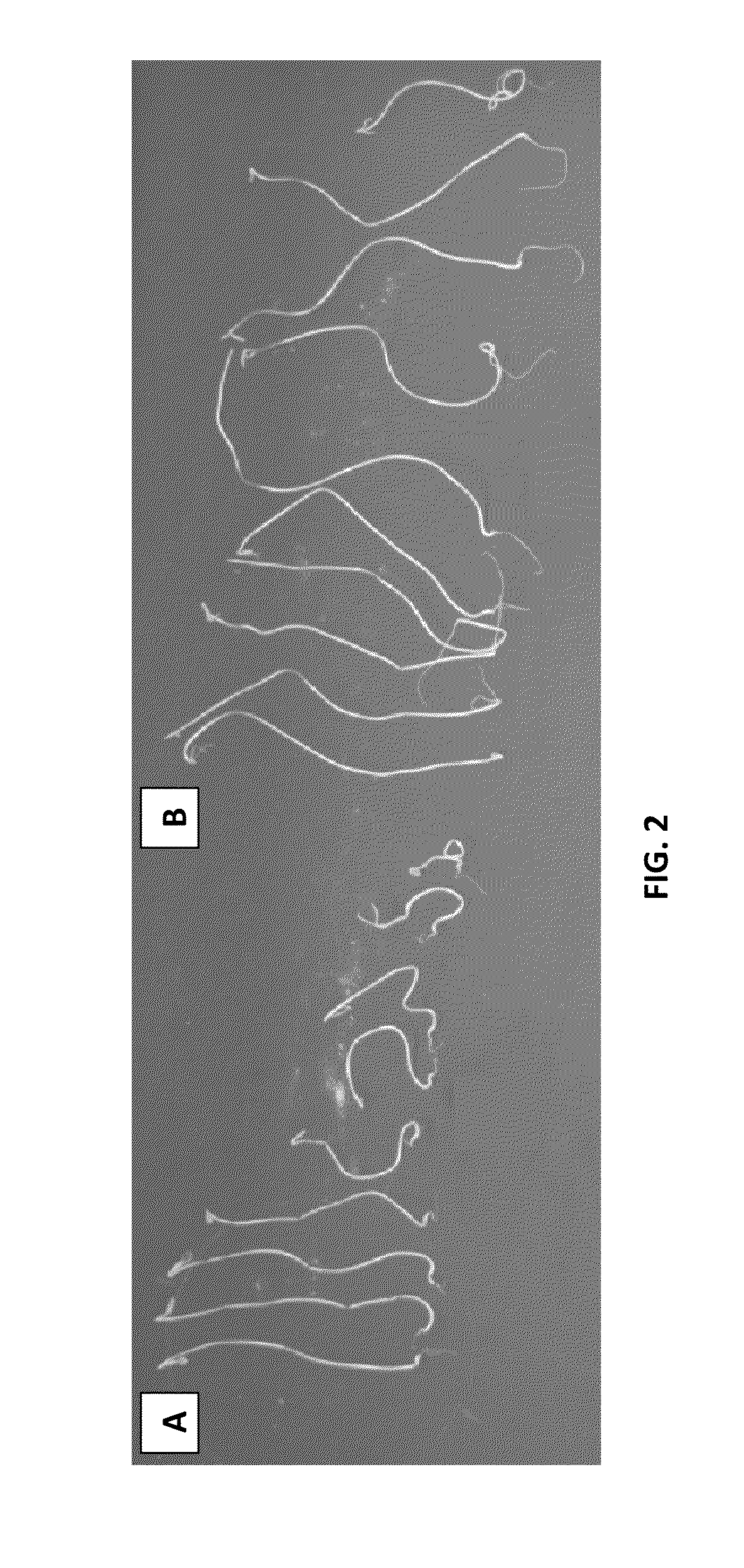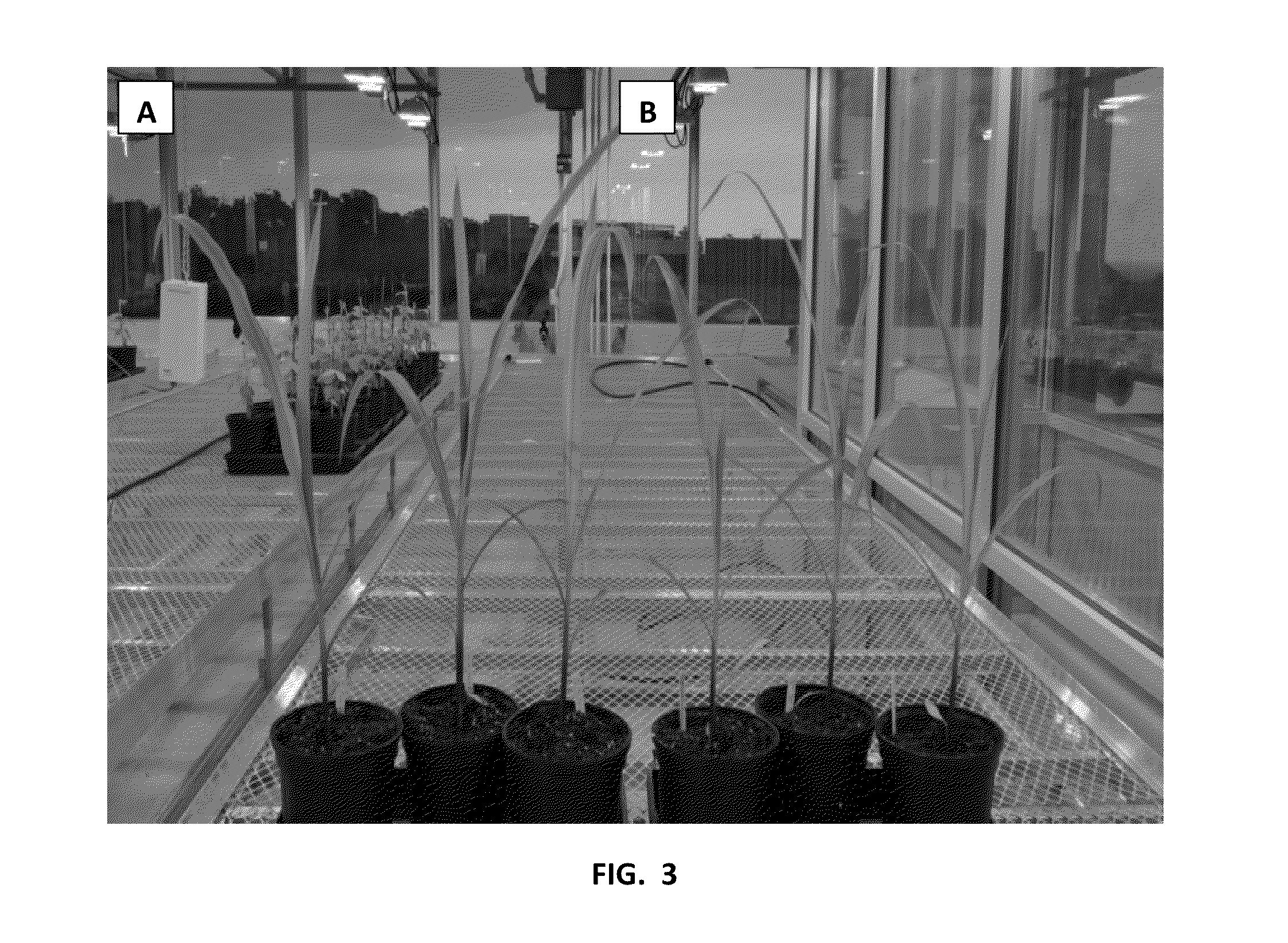Bacillus licheniformis rti184 compositions and methods of use for benefiting plant growth
a technology of licheniformis and rti184, which is applied in the direction of microorganisms, biocide, bacteria based processes, etc., can solve the problems of stimulating plant growth and slowing fruit ripening, use of chemical agents, and economic losses
- Summary
- Abstract
- Description
- Claims
- Application Information
AI Technical Summary
Benefits of technology
Problems solved by technology
Method used
Image
Examples
example 1
[0101]Identification of a Bacterial Isolate as a Bacillus Licheniformis Through Sequence Analysis
[0102]A plant associated bacterial strain, designated herein as RTI184, was isolated from the root of rice grown in California. The 16S rRNA and the rpoB genes of the RTI184 strain were sequenced and subsequently compared to other known bacterial strains in the NCBI and RDP databases using BLAST. It was determined that the 16S RNA partial sequence of RTI184 (SEQ ID NO: 1) is nearly identical to the 16S rRNA gene sequence of two other known strains of B. licheniformis, Bacillus licheniformis strain 9945A (99%, 2 bp difference over 1545 bp in one copy of the 16S rRNA gene out of three different copies) and Bacillus licheniformis ATCC 14580 (99%, 8 bp difference over 1545 bp). In addition, it was determined that the rpoB sequence of RTI184 (SEQ ID NO: 2) has 100% sequence identity to known strain Bacillus licheniformis 9945A (CP005965) and 97% sequence identity to Bacillus licheniformis str...
example 2
Anti-Microbial Properties of Bacillus Licheniformis RTI184 Isolate
[0103]The antagonistic ability of the isolate against major plant pathogens was measured in plate assays. A plate assay for evaluation of antagonism against plant fungal pathogens was performed by growing the bacterial isolate and pathogenic fungi side by side on 869 agar plates at a distance of 4 cm. Plates were incubated at room temperature and checked regularly for up to two weeks for growth behaviors such as growth inhibition, niche occupation, or no effect. In the case of screening for antagonistic properties against bacterial pathogens, the pathogen was first spread as a lawn on 869 agar plates. Subsequently, 20 μl aliquots of a culture of RTI184 were spotted on the plate. Plates were incubated at room temperature and checked regularly for up to two weeks for an inhibition zone in the lawn around the positions were RTI184 had been applied. A summary of the antagonism activity is shown in Table I below.
TABLE IAnt...
example 3
Phenotypic Traits of Bacillus Licheniformis RTI184 Isolate
[0104]In addition to the antagonistic properties, various phenotypic traits were also measured for the Bacillus licheniformis RTI184 strain and the data are shown below in Table II. The assays were performed according to the procedures described in the text below Table II.
TABLE IIPhenotypic Assays: phytohormone production, acetoin and indole acetic acid (IAA), and nutrient cycling of Bacillus licheniformis RTI184 isolate.Characteristic AssaysRTI184Acid production (Methyl Red)−Acetoin production (MR-VP)+++Chitinase activity+Indole-3-Acetic Acid production−Protease activity+Phosphate solubilization−Phenotypehard dry texture white / cream+++ very strong,++ strong,+ some,+− weak,− none observed
[0105]Acid and Acetoin Test.
[0106]20 μl of a starter culture in rich 869 media was transferred to 1 ml Methy Red-Voges Proskauer media (Sigma Aldrich 39484). Cultures were incubated for 2 days at 30° C. 200 rpm. 0.5 ml culture was transferred...
PUM
| Property | Measurement | Unit |
|---|---|---|
| pH | aaaaa | aaaaa |
| fresh weight yield | aaaaa | aaaaa |
| fresh weight yield | aaaaa | aaaaa |
Abstract
Description
Claims
Application Information
 Login to View More
Login to View More - R&D
- Intellectual Property
- Life Sciences
- Materials
- Tech Scout
- Unparalleled Data Quality
- Higher Quality Content
- 60% Fewer Hallucinations
Browse by: Latest US Patents, China's latest patents, Technical Efficacy Thesaurus, Application Domain, Technology Topic, Popular Technical Reports.
© 2025 PatSnap. All rights reserved.Legal|Privacy policy|Modern Slavery Act Transparency Statement|Sitemap|About US| Contact US: help@patsnap.com



